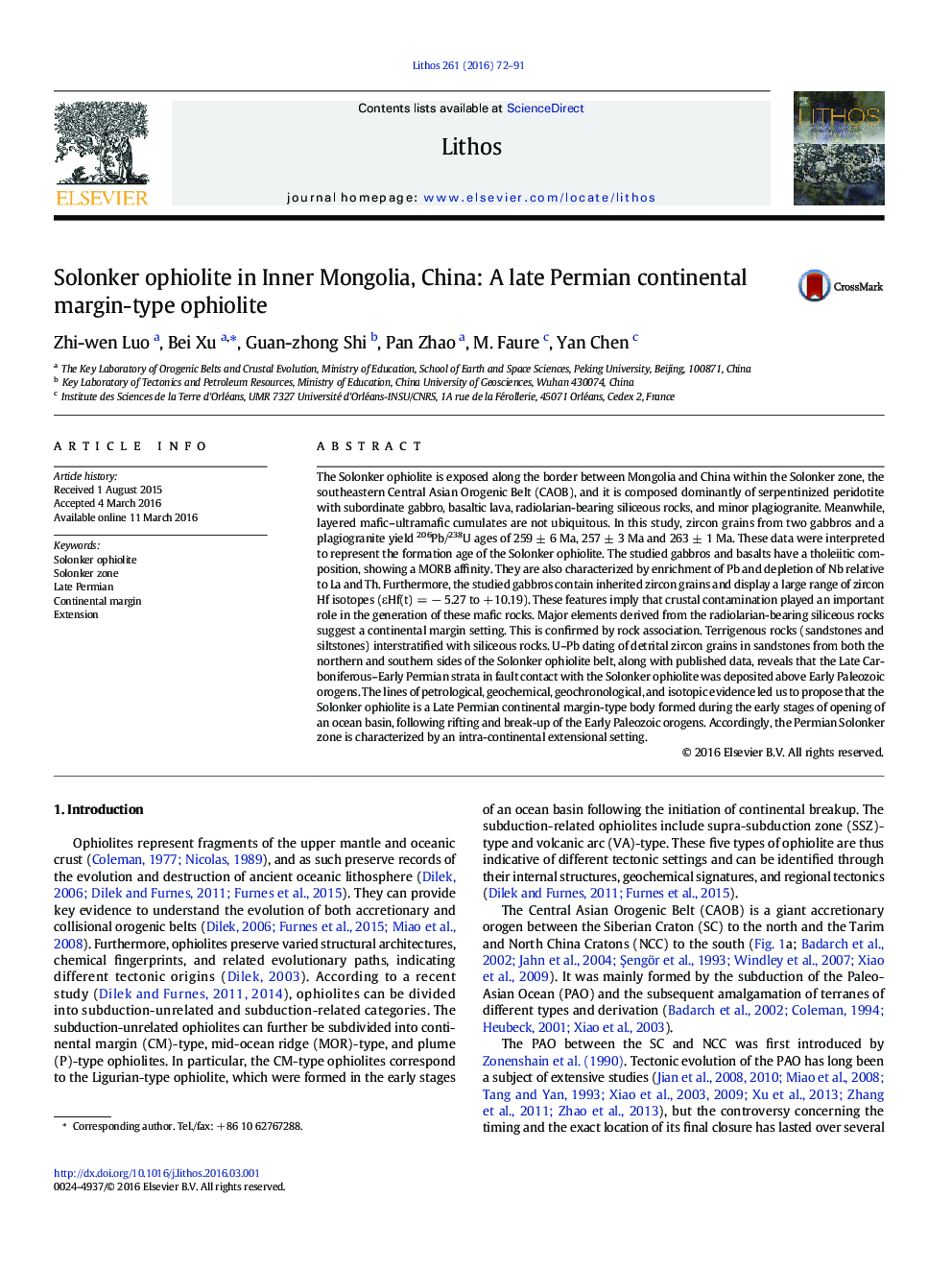| کد مقاله | کد نشریه | سال انتشار | مقاله انگلیسی | نسخه تمام متن |
|---|---|---|---|---|
| 4715548 | 1638643 | 2016 | 20 صفحه PDF | دانلود رایگان |

Highlight
• The Solonker ophiolite formed at ca. 260 Ma.
• The Solonker ophiolite is a CM-type body that formed during early stages of opening of a small ocean basin rather than remnants of Paleo-Asian Ocean.
• The evolution of the Solonker zone in Permian is characterized by intra-continental extension.
The Solonker ophiolite is exposed along the border between Mongolia and China within the Solonker zone, the southeastern Central Asian Orogenic Belt (CAOB), and it is composed dominantly of serpentinized peridotite with subordinate gabbro, basaltic lava, radiolarian-bearing siliceous rocks, and minor plagiogranite. Meanwhile, layered mafic–ultramafic cumulates are not ubiquitous. In this study, zircon grains from two gabbros and a plagiogranite yield 206Pb/238U ages of 259 ± 6 Ma, 257 ± 3 Ma and 263 ± 1 Ma. These data were interpreted to represent the formation age of the Solonker ophiolite. The studied gabbros and basalts have a tholeiitic composition, showing a MORB affinity. They are also characterized by enrichment of Pb and depletion of Nb relative to La and Th. Furthermore, the studied gabbros contain inherited zircon grains and display a large range of zircon Hf isotopes (εHf(t) = − 5.27 to + 10.19). These features imply that crustal contamination played an important role in the generation of these mafic rocks. Major elements derived from the radiolarian-bearing siliceous rocks suggest a continental margin setting. This is confirmed by rock association. Terrigenous rocks (sandstones and siltstones) interstratified with siliceous rocks. U–Pb dating of detrital zircon grains in sandstones from both the northern and southern sides of the Solonker ophiolite belt, along with published data, reveals that the Late Carboniferous–Early Permian strata in fault contact with the Solonker ophiolite was deposited above Early Paleozoic orogens. The lines of petrological, geochemical, geochronological, and isotopic evidence led us to propose that the Solonker ophiolite is a Late Permian continental margin-type body formed during the early stages of opening of an ocean basin, following rifting and break-up of the Early Paleozoic orogens. Accordingly, the Permian Solonker zone is characterized by an intra-continental extensional setting.
Journal: Lithos - Volume 261, 15 September 2016, Pages 72–91